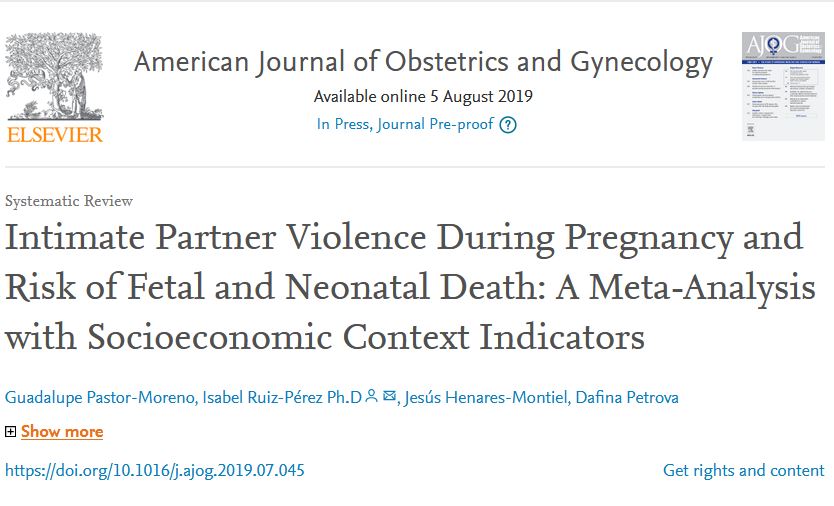
Objective
To summarize the results from observational studies examining the risk of fetal and neonatal death (perinatal death) as a function of the experience of Intimate Partner Violence (IPV) during pregnancy and examine the influence of socioeconomic context indicators on this association.
Data sources
Bibliographic searches were conducted in PubMed, EMBASE, CINAHL, and LILACS until March 2019.
Study eligibility criteria
We considered observational studies that provided data on the association between IPV during pregnancy and perinatal death.
Study appraisal and synthesis methods
Information collected included study characteristics, type, and prevalence of IPV, and the reported association between IPV and perinatal death. Quality of the included studies was assessed using the Newcastle-Ottawa scale. Two reviewers independently conducted all review procedures; disagreements were resolved by a third reviewer. Meta-analyses were conducted based on the specific type of IPV (physical, psychological, sexual, “unspecified”) and also based on “any type” of IPV, considering one effect size per study regardless of the type of IPV analyzed. Meta-regression analyses were performed to assess the possible effects of socioeconomic context. The proportion of deaths attributable to the exposure of IPV based on the crude data from the three cohort studies available also was calculated.
Results
Seventeen studies were included. The random effects-model showed a statistically significant increase in the odds of perinatal death among women exposed to unspecified IPV (OR=3.18; 95%CI=1.88-5.38), physical IPV (OR=2.46; 95%IC=1.76-3.44), and any type of IPV during pregnancy (OR=2.89; 95%CI=2.03-4.10). Meta-regression analysis showed stronger associations in countries with higher Gross Domestic Product (OR=1.03; 95%CI=1.02-1.04) and higher percentage of health expenditure (OR=1.27; 95%CI=1.09-1.46). The proportion of deaths attributable to exposure to IPV in cohort studies was AP=60%; 95%CI=15%-81%.
Conclusions
Pregnant women who experience IPV during pregnancy may be about three times more likely to suffer perinatal death compared to women who do not experience IPV. It should be a priority to include IPV screenings or other detection strategies in pregnancy monitoring or family planning programs, as these could help avoid preventable perinatal deaths.


